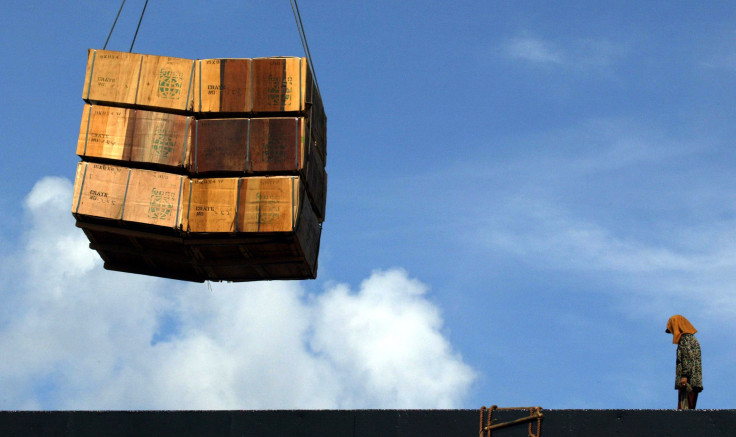Asia Economic Outlook 2014: Leaders And Laggards

The year 2014 will see Asia rely more on the rest of the world for growth, not vice versa, predicts Rob Subbaraman, chief economist for Asia outside Japan at Nomura in Singapore.
Persistently loose monetary policy has fueled private credit booms across Asia, but more than the level, it is the speed at which credit is outpacing nominal gross domestic product growth that concerns economists.
Past financial crises in major economies are often preceded by the private credit-to-GDP ratio rising sharply by 30 percentage points in the five years before the crisis, according to Nomura, and many Asian countries have either breached, or are close to, this mark since 2008.
“Asia needs to tighten policy and accelerate structural reforms, or it will become a breeding ground for future financial crises,” Subbaraman said in a note to clients.
A debt-fueled asset-price boom stimulates growth, but not forever. If policymakers decide to slowly deflate the bubble for long-term sustainability, then near-term growth will likely take a hit as the wealth-effect fades and debt-servicing costs mount. Nomura expects Asia ex-Japan’s total GDP growth to fall below 6.0 percent in 2014.
The worst outcome would be a continuation of the status quo, allowing bubbles to form and eventually burst, leading to outright recession.
Next year will see a divergence of performance across Asian economies, opening up the biggest disparities in decades. Here is how Nomura anticipates the growing divide between Asia’s leaders and laggards:
The Leaders
Korea: Nomura expects South Korea’s GDP to rise to 4.0 percent in 2014 from 2.9 percent this year, driven by exports. Korea's high valued-added exports will likely benefit from improved demand from the U.S., euro area and Japan -- more than offsetting slowing demand from China and other emerging markets.
Nomura expects the Bank of Korea to start to reduce its accommodative policy stance by hiking policy rates by 25 basis points to 2.75 percent in the fourth quarter of 2014.
Philippines: Nomura lowered its GDP growth forecast for 2013 to 7.1 percent from 7.3 percent, taking into account the impact of the typhoons in the fourth quarter. However, the firm also raised its 2014 GDP growth forecast to 6.7 percent from 6.2 percent, reflecting its view that reconstruction will spur economic activity in the months ahead.
The country’s economy is built on strong fundamentals: The combination of strong growth, a solid external surplus, stable politics and still-positive reform prospects sets the Philippines apart from its regional peers. Economists expect Bangko Sentral ng Pilipinas to hike rates by 100 basis points in 2014, starting in the second quarter.
Malaysia: Political risks have subsided and Nomura expects a rejuvenation of fiscal reforms to result in positive sovereign rating action. Its open economy will benefit from an export recovery. The firm forecasts GDP growth to rise to 4.5 percent in 2014 from an expected 4.3 percent in 2013, reflecting the improvement in global growth, which should more than offset weaker domestic demand.
The Bank Negara Malaysia will likely hike rates by a cumulative 50 basis points in the second half of 2014.
The Laggards
China: The world’s second-largest economy’s GDP growth probably peaked at 7.8 percent in the third quarter of 2013 and will slow to 7.5 percent in the last three months of this year. Nomura is looking for the slowdown to continue into 2014, with GDP growth of 7.1 percent year-over-year in the first quarter and 6.7 percent in the second. For the full year, China is expected to growth at a rate of 6.9 percent in 2014 and 6.8 percent in 2015.
The reasons behind this relatively bearish forecast are primarily policy tightening affecting the property market and infrastructure investment. Some corporate defaults are likely, helping to stamp out moral hazard. Progress on structural reform will be slow.
India: The country’s economic growth appears to be near its trough. Nomura believes that growth has bottomed out, but the recovery will be very gradual, with GDP growth rising only marginally to 4.8 percent year-over-year in 2014 from 4.7 percent in 2013. A stronger pickup in 2015 is likely with GDP growth rising to 5.7 percent.
With growth bottoming out, the policy focus will shift to containing inflation. In 2014, Nomura expects CPI inflation to average 9.3 percent, remaining above 9 percent for a sixth consecutive year. This will probably force the Reserve Bank of India (RBI) to hike rates by a further 50 basis points to 8.25 percent by mid-2014.
Indonesia: Due to the tighter policy environment, Nomura forecasts 2014 GDP growth to be unchanged from this year at 5.7 percent, which is subdued when compared to average growth of 6.3 percent over 2010-2012.
Bank Indonesia is expected to focus on stability over growth, hiking by a further 50 basis points in the first quarter of 2014. Nomura expects Jakarta Governor Joko Widodo (PDI-P party) to win the July presidential election. Reform momentum looks set to slow and may not pick up even after the election.
Thailand: Populist policies have borrowed growth from the future and fueled household debt. There is a scarcity of capital and skilled labor. Politics are unstable. Weak foreign direct investment (FDI) has meant more hot-money flows to finance the current account deficit. Nomura sees policy rates on hold in 2014.
© Copyright IBTimes 2024. All rights reserved.






















